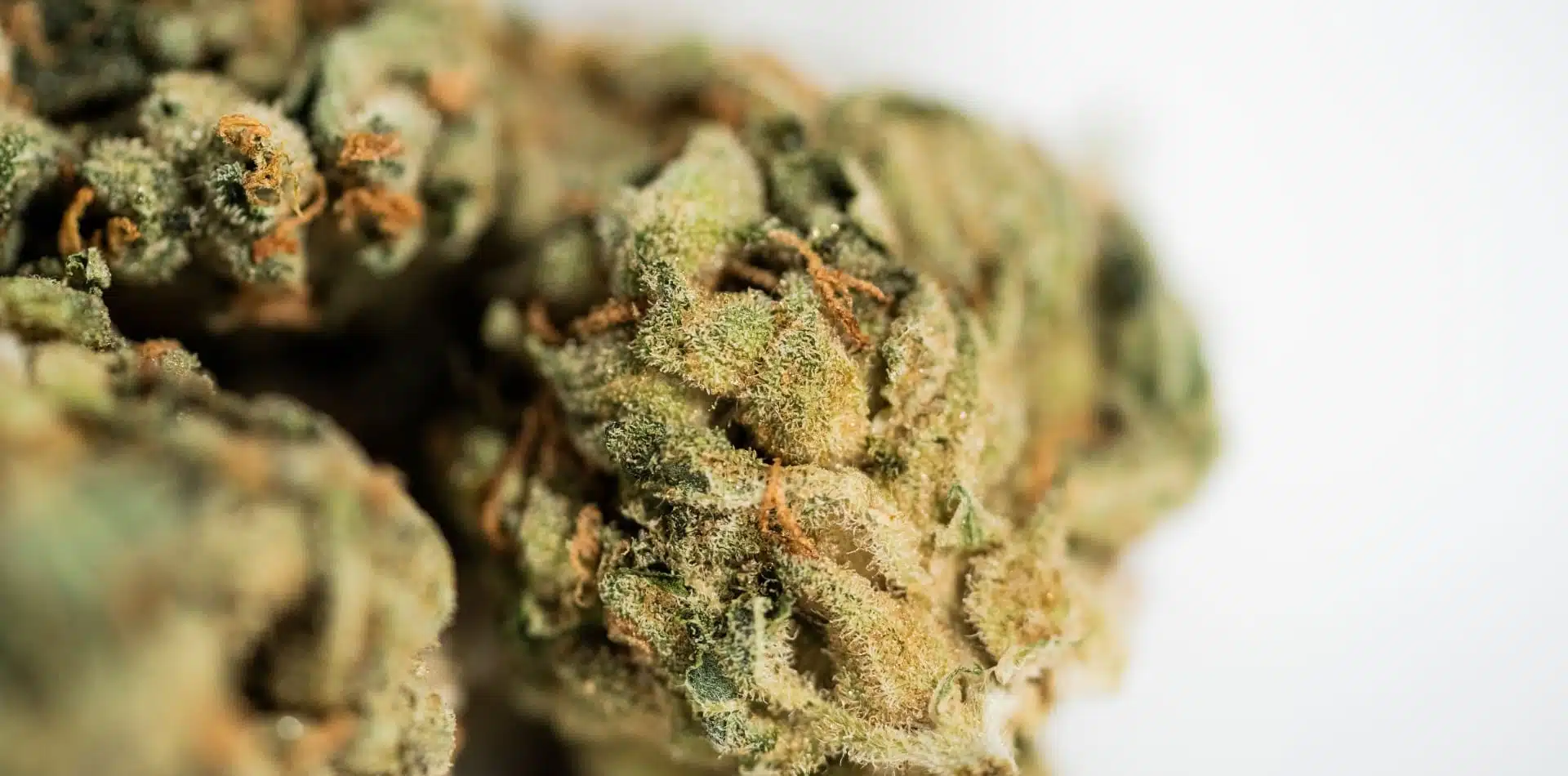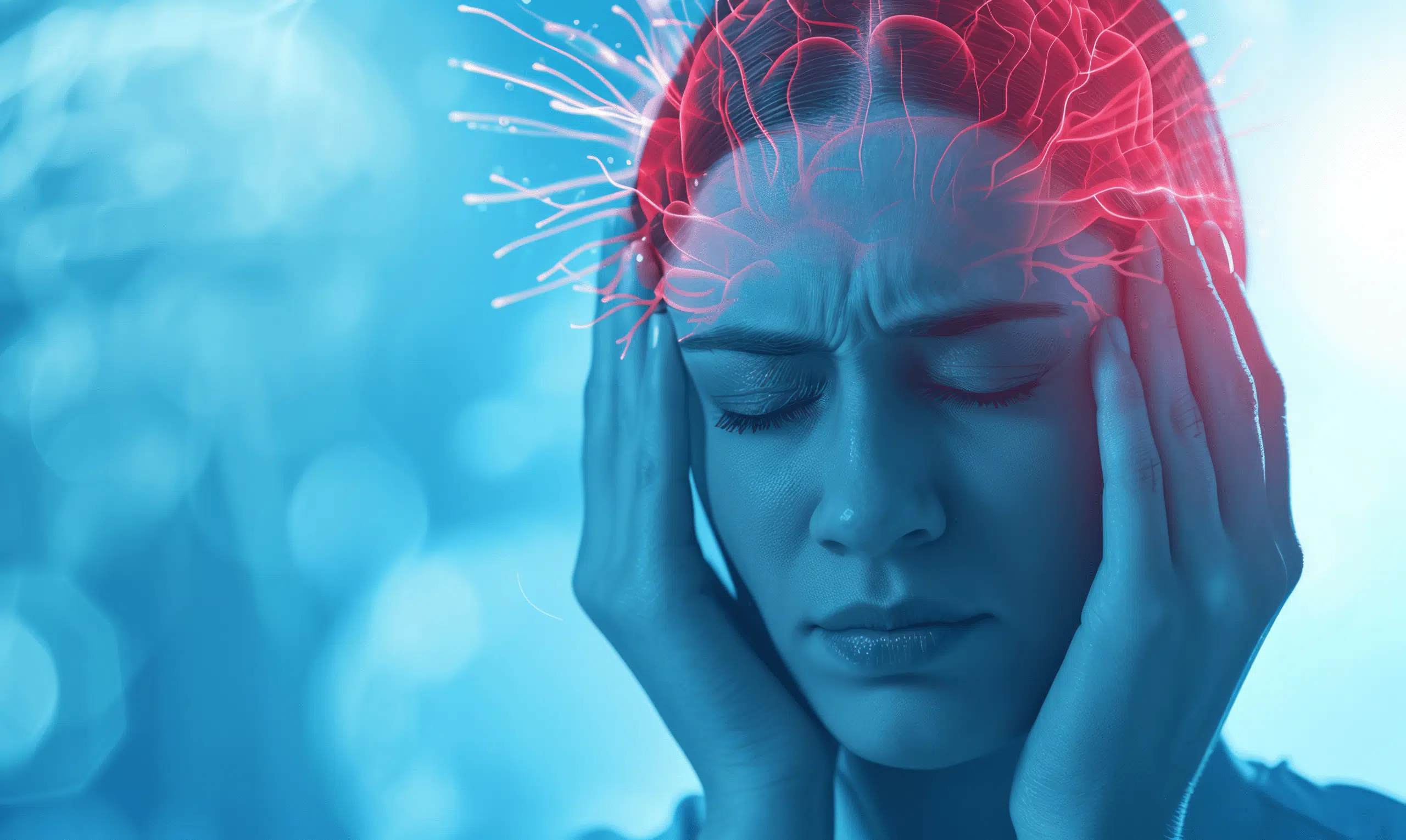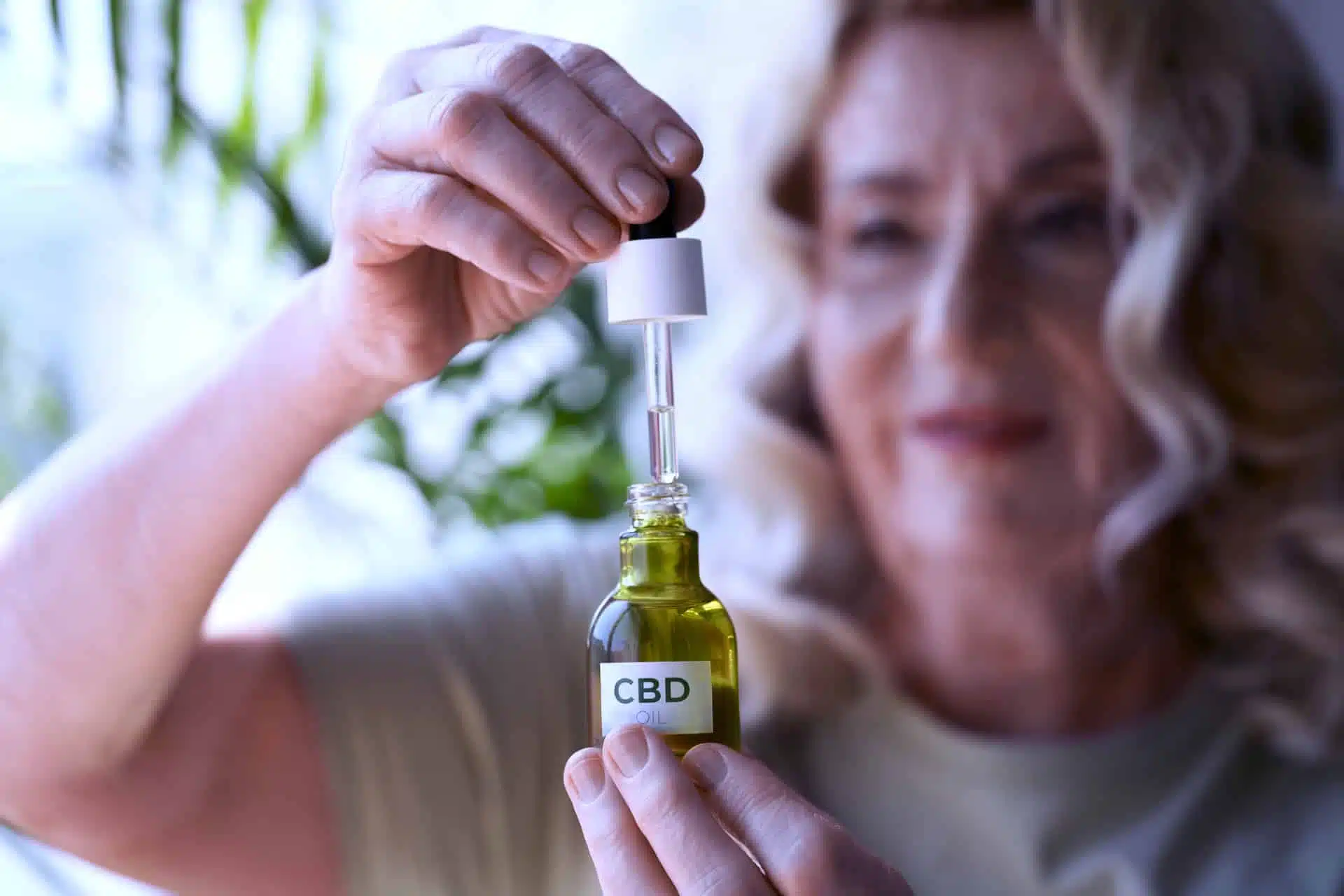Share
The Role of Medical Cannabis in Managing Chronic Pain Conditions

The Role of Medical Cannabis in Managing Chronic Pain Conditions
Cannabinoids are believed to influence pain through various pathways, including the endocannabinoid system, which has receptors in the central nervous system, periphery, immune, and hematologic systems.
Cannabis contains over 100 cannabinoids, with the two most extensively studied being THC and CBD. THC inhibits the release of glutamate and 5-hydroxytryptamine while increasing dopamine secretion. On the other hand, CBD enhances adenosine receptor signaling and reduces reactive oxygen species, tumor necrosis factor, and T cell proliferation, all without causing the psychoactive effects associated with THC.
The diverse analgesic and anti-inflammatory properties of cannabinoids may have a positive impact on how pain is perceived across various conditions.
Chronic pain is a common reason why adults seek medical help, as it can significantly impact their quality of life and mental well-being. Patients typically describe it as the pain they have experienced most days or every day for the past three months. According to the Centers for Disease Control and Prevention (CDC), women and older adults aged 65 and over tend to report chronic pain more frequently.
Traditionally, opioid medications have been the go-to treatment for chronic pain. However, they come with a range of side effects, including severe constipation, breathing problems, and the risk of dependence. The opioid epidemic, which sees many people suffering from addiction, is a significant concern. The World Health Organization (WHO) estimates that over half a million deaths annually are linked to drug use, with opioids being responsible for more than 70% of these deaths.
In recent years, there has been a growing interest in using compounds from cannabis plants, such as Cannabis sativa and Cannabis indica, to manage pain. Studies have shown that these compounds can have therapeutic effects on pain while also reducing the need for opioids in patients with chronic conditions like chronic kidney disease.
Both THC and CBD are commonly used to manage chronic pain in conditions like cancer, multiple sclerosis, fibromyalgia, and sleep apnea.
Understanding pain modulation through the endocannabinoid system
Medical researchers have been exploring the potential of cannabinoids for therapy ever since they discovered cannabinoid receptors and the natural substances that activate them. These receptors are distributed ubiquitously in the body, including the central nervous system (CNS), which comprises the brain and spinal cord. When activated, they can help reduce pain by binding to two types of cannabinoid receptors: CB1 and CB2.
The body produces its own cannabis-like molecules called endocannabinoids, which target the same receptors as THC, the main mind-altering ingredient in marijuana. Endocannabinoids act like brakes in the brain, helping to regulate various bodily functions like appetite, immune response, inflammation, and pain relief.
An overview focuses on two well-known endocannabinoids, anandamide and 2-arachidonoylglycerol, and their roles in controlling how we respond to pain. These endocannabinoids, produced naturally by the body, influence pain responses in different parts of the nervous system.
Two key endocannabinoids, anandamide and 2-arachidonoylglycerol, have been extensively studied for their roles in pain modulation. Current research primarily focuses on understanding how these endocannabinoids function in the body, including their production and impact on pain.
The effects of cannabinoid receptors are mediated through two main types: CB1 and CB2. CB1 receptors are mainly in the central nervous system, while CB2 receptors are mostly in immune cells, although recent studies suggest they might also be in the central nervous system. Activating these receptors affects various cellular processes, including neurotransmitter release.
Endocannabinoids are produced and released as needed by the body. They can activate cannabinoid receptors on cell surfaces and within cell membranes, playing a crucial role in synaptic transmission. Endocannabinoid signaling is regulated by specific enzymes. These enzyme inhibitors show promise for increasing endocannabinoid levels, potentially offering therapeutic benefits.
Studies have shown that the endocannabinoid system is involved in pain modulation at various levels, offering potential targets for pain management therapies. Animal studies support the idea that endocannabinoids suppress pain through specific mechanisms.
In summary, investigations into the manipulation of the endocannabinoid system demonstrate potential for relieving both short-term and long-lasting inflammatory pain in animal models. This involves the activation of CB1 and CB2 receptors along with other signaling pathways, depending on the particular pain model being studied.

Exploring traditional approaches to alleviate chronic pain
Chronic pain occurs when the pain sensation persists for more than three months. It affects around 30% of patients and is the main reason people seek medical help and use medications. Common areas affected by chronic pain include the lower back, head, knees, lower limbs, shoulders, spine, and hips. Medication therapy is an important tool aimed at improving the individual’s quality of life, along with non-pharmacological approaches in a multidisciplinary approach.
Currently, there are various medications available, including opioids, nonsteroidal anti-inflammatory drugs (NSAIDs), antidepressants, antiepileptics, and serotoninergic compounds. Studies on the use of cannabinoids have increased in recent years, but there is still no evidence to support their use as a first-line treatment for this condition. Opioids are effective for oncological pain, whereas pain from other pathophysiological processes may respond better to other available options, such as dual antidepressants or antiepileptics. It is important to emphasize the inclusion of physical activity, psychotherapy, and physiotherapy in necessary cases.
Furthermore, botulinum toxin has gained prominence for its effectiveness in intervention. It is crucial to have a clear understanding that chronic pain is a complex disease involving both organic and emotional processes, requiring both pharmacological and non-pharmacological therapy.
Medication therapy for chronic pain aims to reduce symptoms and improve patients’ quality of life. It is important to remember that palliative care patients suffer from extremely severe pain and therefore require stronger analgesia. While opioids may be effective for pain control, their side effects and overdose-related mortality risk are concerning for patients and medical communities. Hence, it is crucial to validate all other therapeutic options that may help patients suffer less.
Medical cannabis as a therapeutic line for pain symptoms
Cannabis plants come in different varieties, like indica and sativa, each with unique effects. Indica strains are often recommended for anxiety and insomnia due to their calming effects, while sativa strains are known for their energizing effects. The potency of cannabis depends on factors like THC levels and the presence of other cannabinoids and compounds. Scientists are still studying these compounds, like terpenoids, to understand their potential role in treating pain and inflammation.
When taken orally, THC, one of the main compounds in cannabis, absorbs slowly and inconsistently, causing effects to kick in after about 30 minutes to an hour and lasting for several hours. Inhaling THC leads to faster absorption, with effects felt within minutes. THC is metabolized in the liver and can stay in the body for several days, especially for regular users. CBD, another compound in cannabis, has similar effects to THC but is metabolized differently.
Dosing medical marijuana can be tricky due to a lack of standardization. The L.E.S.S. Method suggests starting with a low dose, gradually increasing potency, and adjusting slowly as needed.
Examining clinical evidence for medical cannabis in chronic pain management
The evidence supporting the use of cannabinoids for chronic pain relief is limited. Nevertheless, additional clinical studies are backing medicinal cannabis as a treatment option, especially for neuropathic and cancer-related pain. Chronic pain not only affects physical health but also impacts the social and professional lives of patients and their families.
Common adverse events reported in eligible trials include impairment, vomiting, impaired attention, drowsiness, dizziness, nausea, and diarrhea.
Treatment recommendations apply to both adults and children experiencing moderate to severe chronic pain, irrespective of its origin. While opioids are effective for cancer-related pain, other options, like dual antidepressants or antiepileptics, work better for pain from other causes. Physical activity, psychotherapy, and physiotherapy are also important components of pain management.
It’s important to note that our recommendation does not cover smoked or vaporized cannabis, recreational cannabis, or patients in palliative care. Oral or topical administration can prevent pulmonary issues caused by inhaling cannabis.
Most trials excluded chronic pain patients with mental illness or those involved in litigation, so the recommendation’s applicability to these populations is uncertain. The evidence for adolescents and emerging adults is also limited, but there’s no reason to believe the benefits would be different. However, potential neurocognitive effects should be considered, especially with THC-containing products.
Patients with chronic pain generally prefer medical cannabis with a balanced THC:CBD ratio or high CBD products over those high in THC. Social factors, both positive (support from friends and family) and negative (stigma), influence the use of medical cannabis. Concerns include adverse effects, addiction, tolerance, and cost, but some patients find that legalization has improved access and influenced their decision to try medical cannabis.

An overview of medical cannabis for health practitioners, patients, nurses, and families
Patients, families, doctors, and nurses all have different views on using medical cannabis to manage pain. Nurse researchers are becoming increasingly involved as cannabis research advances. Nurses focus on improving patient care and education, studying real-life situations to help patients better.
There’s talk about using medical cannabis to help with the opioid crisis. Some research suggests that when marijuana is legal, fewer people die from opioid overdoses. Nurses can look at this research and design their own studies on medical marijuana for pain relief. Anne Dabrow Woods, Chief Nurse at Wolters Kluwer, says nurses are important in finding new ways to manage pain and fight the opioid crisis.
Nurses are in a good position to lead efforts to manage pain. They can use different treatments and be careful not to give too much or too little medication. Making it easier for people to get medical cannabis could give them more choices for managing pain.
Both patients and nurses need to learn about medical cannabis. Nurses can teach patients about the rules and safety of using cannabis, including what side effects it might have and how it could affect other medicines.
Selecting the appropriate strain and dosage for effective pain relief
According to the European Pain Federation’s (EFIC) position paper on the appropriate use of cannabis-based medicines and medical cannabis for managing chronic pain, only experienced clinicians should consider using these medicines as part of a comprehensive treatment plan. It is recommended to use them as additional medication if the initial and secondary recommended therapies have not been effective or well-tolerated.
Prescribing cannabis flowers with a high (>12.5%) THC content is not recommended. The recommended dose is no more than one inhalation four times per day to avoid cannabis intoxication and cognitive impairment.
Medical cannabis strains have varying levels of THC, ranging from 1% to 22%, and CBD, ranging from 0.05% to 9%. However, there is limited information available to guide the selection of the best THC concentration and THC to CBD ratio for effectiveness and safety.
One study found that smoking 25 mg of herbal cannabis containing 9.4% THC three times a day for five days significantly reduced average pain intensity in adults with chronic neuropathic pain. However, herbal cannabis with lower THC concentrations did not produce the same effect. Importantly, participants in this study did not experience serious cognitive side effects.
Another review of several studies suggested that higher THC content in medical cannabis may lead to increased pain relief. However, it also noted that higher THC doses were associated with more frequent declines in attention, psychomotor performance, memory, and feelings of being “high.”
In practical situations, the doses of medical cannabis are often higher. For example, one observational study reported that patients typically used 2.5 grams per day of herbal cannabis with 12.5% THC. To avoid intoxication and cognitive impairment, guidelines recommend starting with one inhalation per day and gradually increasing to a maximum of four inhalations per day. A dosage of 400 mg per day, which is equivalent to half a cannabis cigarette, is generally regarded as safe and efficacious.
Safety considerations
All patients with chronic pain should undergo a thorough assessment by skilled clinicians using a comprehensive approach that considers biological, psychological, and social factors. Treatment plans should be developed and implemented based on the latest international standards.
Healthcare providers prescribing medications should be knowledgeable about pain assessment techniques and treatment guidelines, including the safe and effective use of cannabis-based medicines.
The right dose of cannabis-based medicines is the lowest amount needed to achieve the desired pain relief (at least 30%) and improve daily functioning with minimal side effects. Patients and prescribers should consider a trial period of up to three months to assess effectiveness and safety. Long-term treatment should only be continued if there’s a significant improvement and no safety concerns.
Patients who benefit from cannabis-based medicine should be closely monitored by healthcare professionals throughout their treatment. If treatment goals are not met, if side effects become too burdensome, or if signs of misuse appear, alternative options should be explored, and the cannabis-based medicine should be safely discontinued.
Patients and their families should receive thorough education about the use and storage of cannabis-based medicines and be supported throughout the treatment process.
Cannabis-based medicines should only be dispensed by qualified pharmacists who follow local and national regulations and adhere to international best practices.
Sources:
Strand N, et al. Medical Cannabis: A Review from the American Society of Pain and Neuroscience. J Pain Res. 2023 Dec 8;16:4217-4228. doi: 10.2147/JPR.S425862.
Busse J W, et al. Medical cannabis or cannabinoids for chronic pain: a clinical practice guideline. BMJ. 2021;374:n2040. doi:10.1136/bmj.n2040.
Mallick-Searle T, St Marie B. Cannabinoids in Pain Treatment: An Overview. Pain Manag Nurs. 2019 Apr;20(2):107-112. doi: 10.1016/j.pmn.2018.12.006.
Häuser W, et al. European Pain Federation (EFIC) position paper on appropriate use of cannabis-based medicines and medical cannabis for chronic pain management. Eur J Pain. 2018;22(9):1547-1564. doi:10.1002/ejp.1297.
Busse JW, et al. Medical cannabis or cannabinoids for chronic pain: a clinical practice guideline. BMJ. 2021 Sep 8;374:n2040. doi: 10.1136/bmj.n2040.
Treede RD, et al. Chronic pain as a symptom or a disease: the IASP Classification of Chronic Pain for the International Classification of Diseases (ICD-11). Pain. 2019 Jan;160(1):19-27. doi: 10.1097/j.pain.0000000000001384.
Souza TCS, et al. Innovations in chronic pain treatment. Res Soc Dev. 2022;11(16):283111638205. doi: 10.33448/rsd-v11i16.38205.











